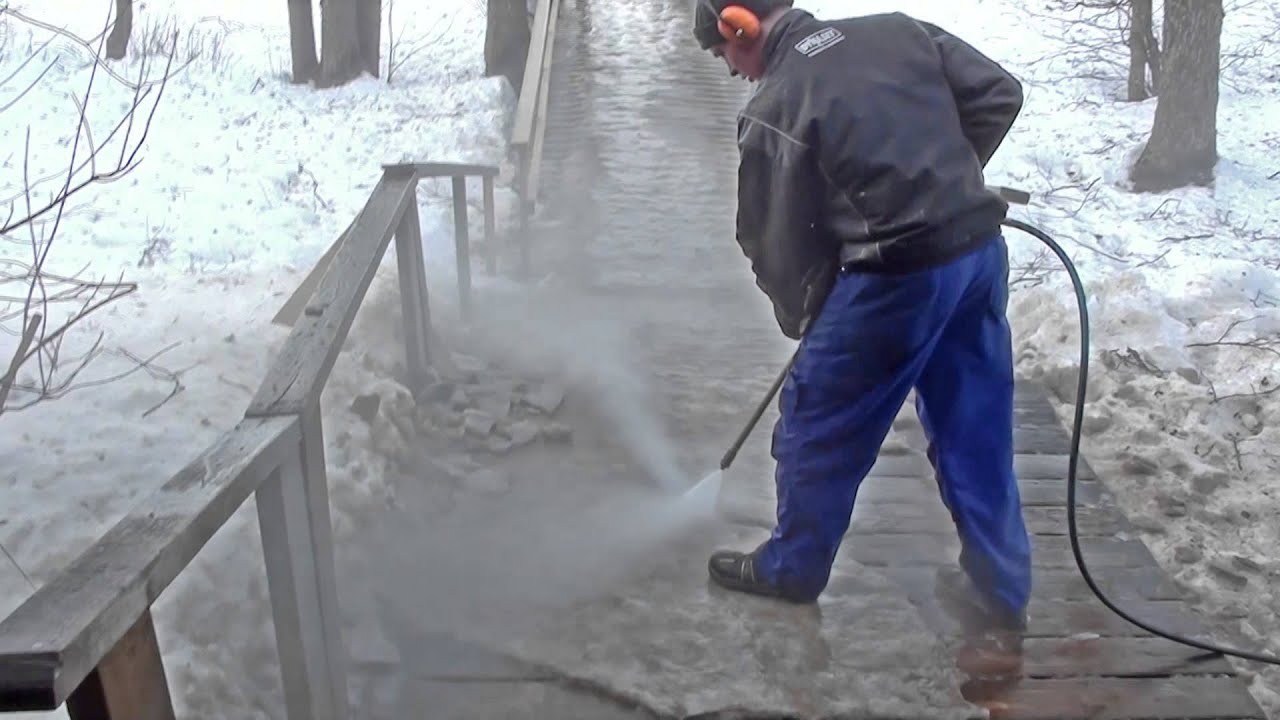
When temperatures drop and everything’s covered in frost, most homeowners put the pressure washer away until spring. But what if you really need to clean that salt-stained driveway or algae-covered siding in the middle of January? Can you safely pressure wash in the winter?
The answer is: Yes, you can—but it requires extra care, the right setup, and a close eye on the weather. 🧤⚠️
Let’s dive into how to pressure wash during the colder months without freezing your equipment—or your fingers.
🧊 What Are the Risks of Pressure Washing in Cold Weather?
Winter brings unique challenges for pressure washing. Here are the top concerns:
- Freezing water in your machine or hoses
- Slippery surfaces from ice forming during or after cleaning
- Shorter drying times that leave behind streaks
- Damage to delicate materials like vinyl or paint due to cold brittleness
Most pressure washers aren’t designed for use below 32°F (0°C), so it’s important to check both the temperature and the manufacturer’s recommendations. 🚫
✅ Ideal Conditions for Winter Pressure Washing
If you must clean something in the winter, make sure:
- The outdoor temperature is above 40°F (4°C)
- There’s no frost or snow on the surface
- The surface will dry within a few hours of cleaning
- Sunlight is available to help with drying ☀️
Never pressure wash in sub-freezing temps unless you’re using specialized commercial gear designed for it.
🧼 Common Winter Pressure Washing Jobs
Some things can’t wait until spring. These are good candidates for winter washing:
- Salt-covered driveways or walkways
- Mold or algae growth on siding
- Commercial storefronts that need to look clean year-round
- Construction equipment maintenance
- Prepping surfaces for sealing or painting (weather-permitting)
Just make sure the surface is clear of ice, and plan to do the job during the warmest part of the day—usually midday. 🌤️
🧰 Essential Equipment for Cold Weather Cleaning
If you’re going to pressure wash in winter, gear up right:
- Cold-weather-rated pressure washer
- Electric models are better for indoor use
- Gas-powered units may require winterizing additives
- Heated water source or hot water pressure washer
- These help prevent freezing in hoses and increase cleaning effectiveness
- Anti-freeze rinse or pump saver solution
- Keeps your machine from freezing post-use
- Rubberized gloves and waterproof gear
- You’ll be working with cold water and possibly wind—stay dry and warm! 🧤🧥
Browse Amazon Here For Top Rated Power Washers And Accessories
🚫 What to Avoid
Pressure washing in winter is doable, but not without its pitfalls. Avoid these mistakes:
- Washing right before sunset – Surfaces may freeze overnight
- Letting water pool on driveways or walkways – Huge slip hazard
- Leaving water in the pump or hose – It can freeze and destroy your machine
- Using too much pressure on brittle, cold materials – They crack more easily
Always drain your equipment completely and store it in a warm area when finished.
🔧 Aftercare: Winterize Your Machine!
Once you’re done, follow these steps:
- Disconnect all hoses
- Drain remaining water
- Run a pump saver through the system
- Store indoors or in a heated garage if possible
This will extend the life of your pressure washer and ensure it’s ready when you need it next. 🔧🧼
🧠 Final Thoughts
Yes, you can pressure wash in the winter—but only with the right precautions. 🥶❄️💦
To recap:
- ✅ Only wash when temps are safely above freezing
- 💧 Use a heated water source if possible
- 🛑 Avoid surfaces prone to freezing or becoming slippery
- 🧰 Winterize your machine immediately after use
When done safely, winter pressure washing can solve real problems—from salt stains to winter mold—without having to wait for spring. Just bundle up, watch the weather, and treat your tools with care. ❄️🚿🏠
Browse Amazon Here For Top Rated Power Washers And Accessories






